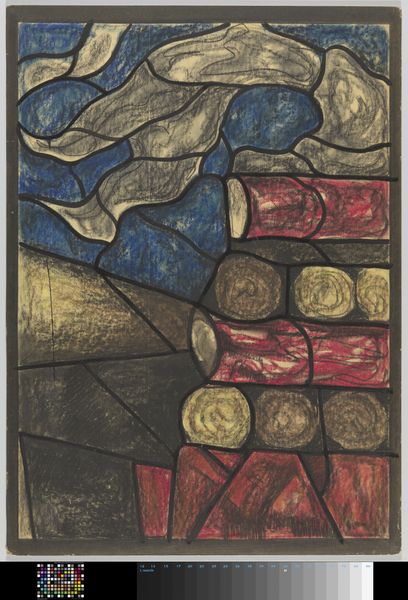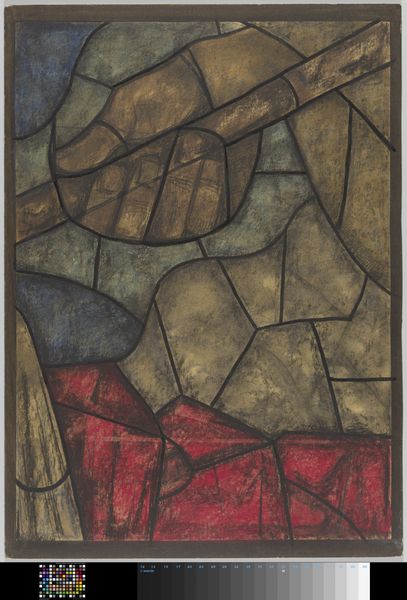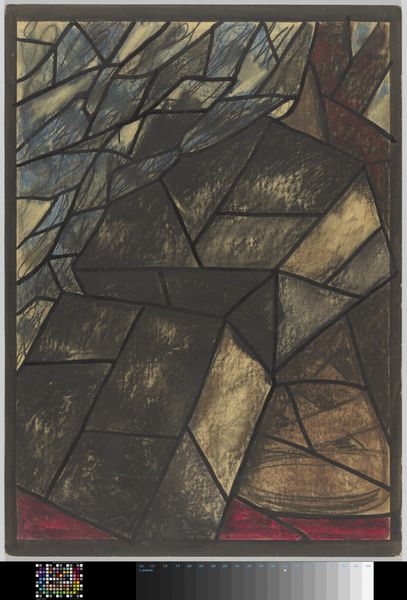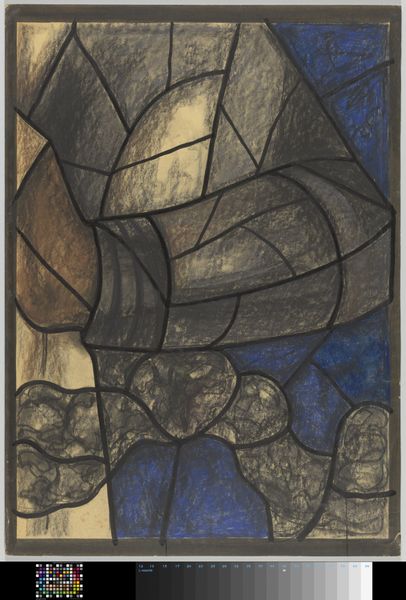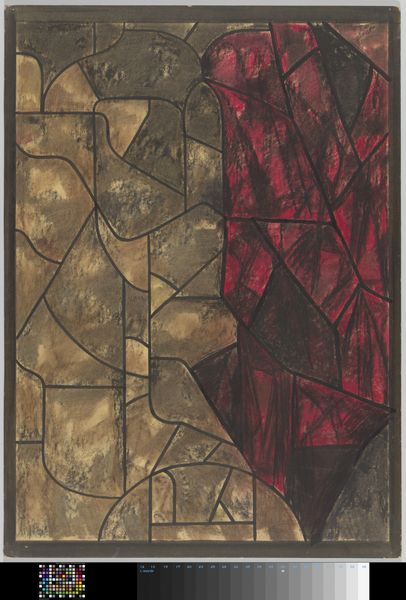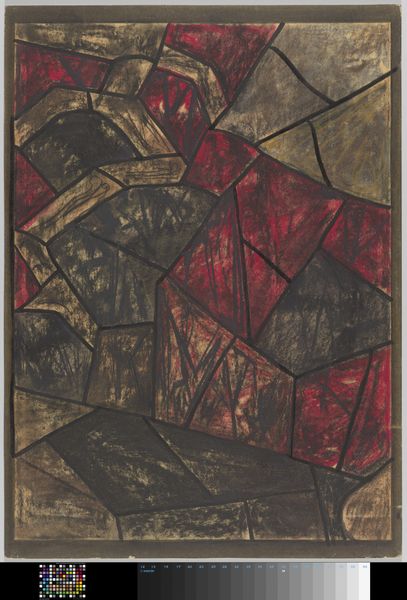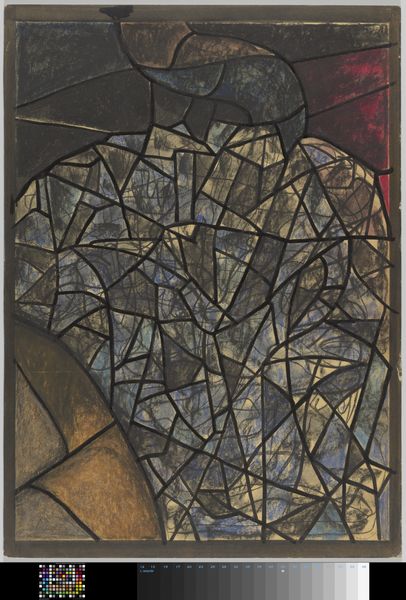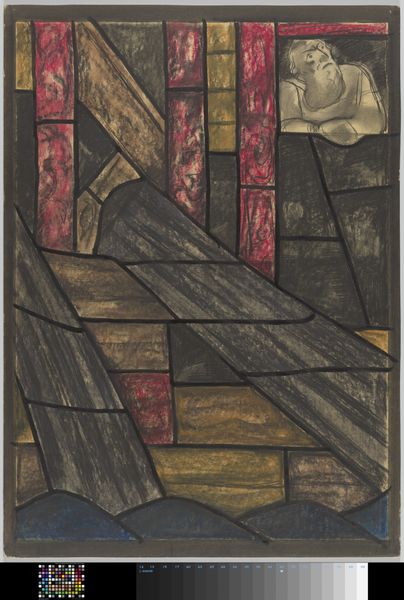
Ontwerp voor raam in het Noordertransept in de Dom te Utrecht c. 1934
0:00
0:00
Dimensions: height 1125 mm, width 809 mm
Copyright: Rijks Museum: Open Domain
Curator: Richard Nicolaüs Roland Holst created this mixed-media drawing titled "Ontwerp voor raam in het Noordertransept in de Dom te Utrecht" around 1934. Editor: It has such a striking graphic quality. The blues, grays, and reds are almost jewel-like against those black outlines. The use of color creates a distinct mood and is also really beautiful in scale. Curator: Absolutely. Considering Holst’s socialist leanings and his involvement in the Dutch Arts and Crafts movement, it’s intriguing to view this design within a broader political context. Stained glass often served as a visual form of propaganda, reinforcing narratives and ideals through religious spaces. The colors themselves likely carry symbolic weight tied to theological doctrines of that era. Editor: Right, but beyond symbolism, I'm also thinking about the labor involved. Each panel was likely handmade, shaped and fitted by skilled artisans. What about the socio-economic implications of commissioning such large-scale, elaborate stained-glass windows during the 1930s in the Netherlands? It begs the question: Who benefited, and whose stories were visually absent? Curator: It’s essential to consider how the commission could perpetuate power imbalances inherent in religious and art patronage structures. In examining such structures, it's vital to note Roland Holst’s earlier dedication to social causes. However, can the aesthetic allure of a design reconcile such potentially contradictory elements between the intentions behind the work and its ultimate reception and contextual relevance within a hierarchical framework? Editor: It really highlights how form and function become intertwined with the material and economic conditions of its making. And also to whom is this 'beauty' accessible? What meaning does it generate, for example, among marginalized community members, not for the clergy? These factors would influence their readings. Curator: Looking at the context from all sides really challenges any singular or definitive assessment of the artwork’s value or impact. Editor: Indeed. Ultimately, the beauty lies in understanding the complex web of materials, makers, and social forces.
Comments
No comments
Be the first to comment and join the conversation on the ultimate creative platform.
